Balkanethnoexp. Part VI. MacedoniaMap
June You never hear about Macedonia on the news, no one dreams of coming here on vacation. When Yugoslavia began to break apart, Macedonia tranquilly became an independent state. And all would have been good and well were it not for Greece, which is staunchly opposed to Macedonia being called Macedonia. At Greece’s insistence, half the maps of the world refer to the country as “the former Yugoslav Republic of Macedonia.” The Greeks’ reasoning being that if the country were called Macedonia, it would eventually try to lay claim to the region of Greece with the same name. The Macedonians, being no fools themselves, responded by erecting a statue of Alexander the Great, the ancient king of Macedon, in the heart of the nation’s capital—despite the fact that he has no connection to the country whatsoever. 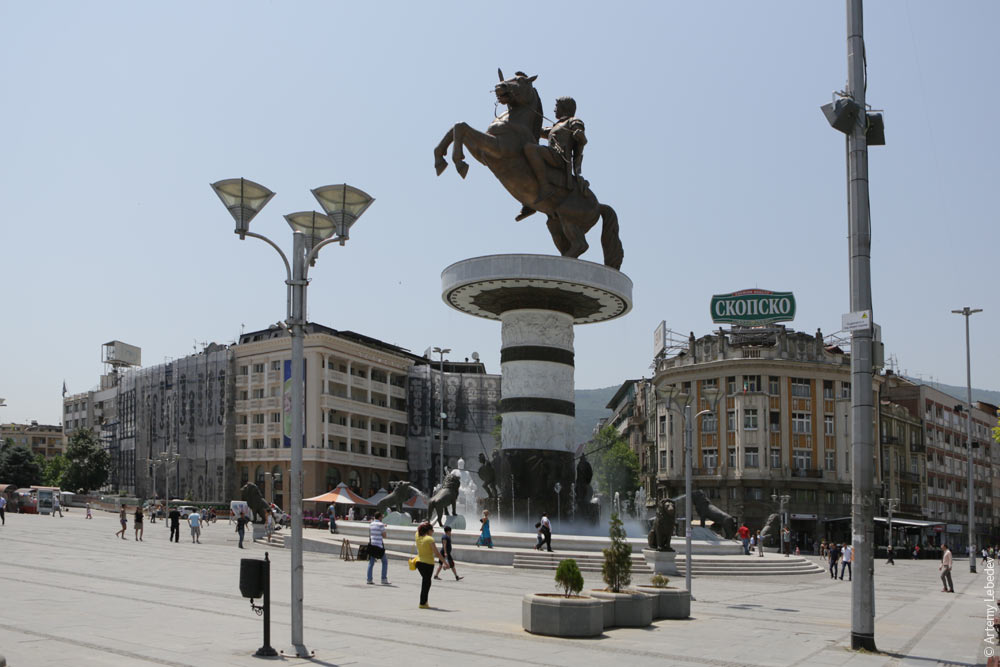 A public service ad about a disappearing species of waiter that doesn’t smile, doesn’t like tourists and takes 20 minutes to bring a cup of coffee. It’s clear that this is exactly how everyone behaves here. 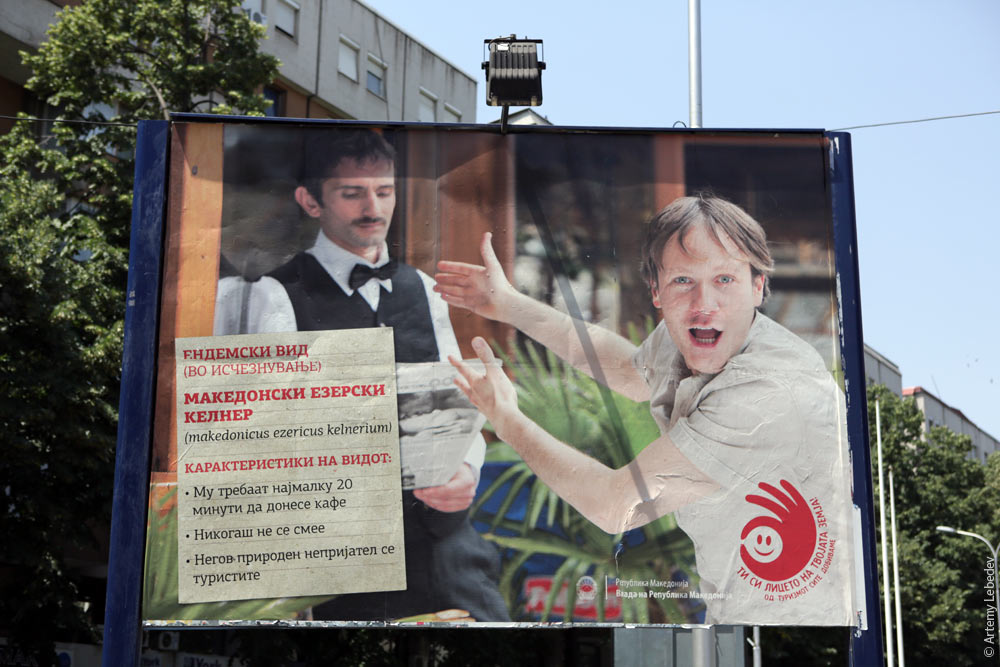 The country uses the Cyrillic alphabet.  They love it so much here that even the Latin letters on license plates are mirrored in Cyrillic inside the red rectangle. 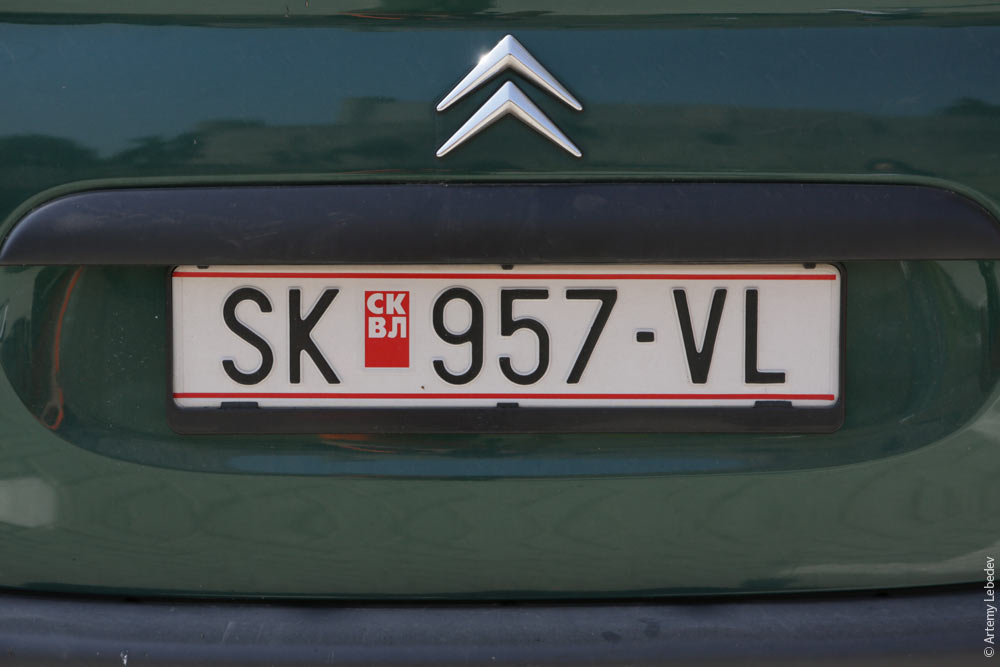 Gas station.  Children and a cow. 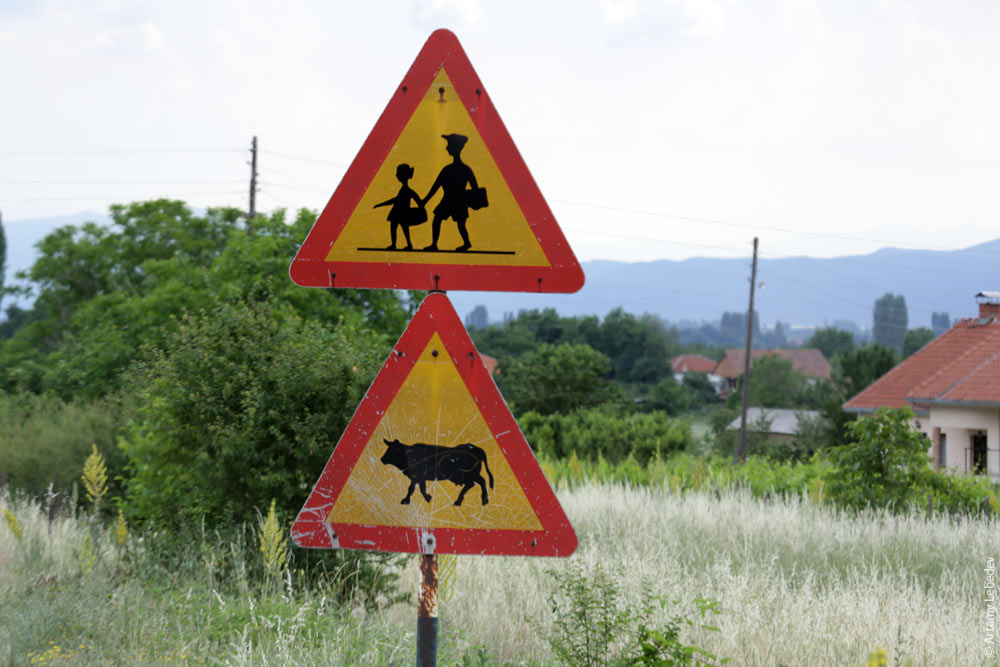 The sidewalks in cities are separated from the roadway with little posts. 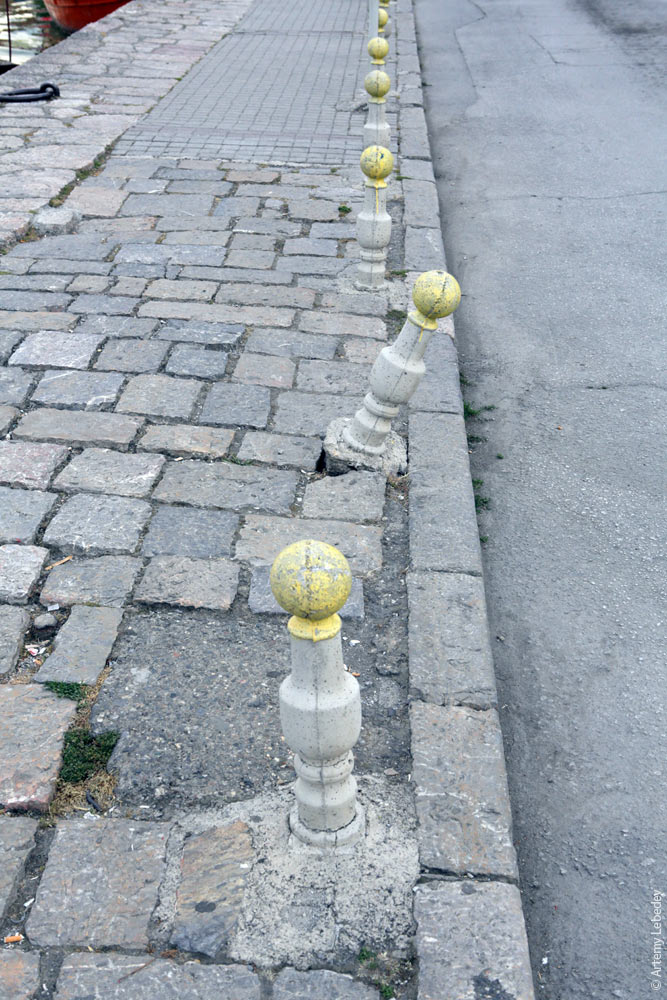 Like in Kosovo, the stoves in kebab houses jut out into the street in the form of glass boxes built right into the front window. 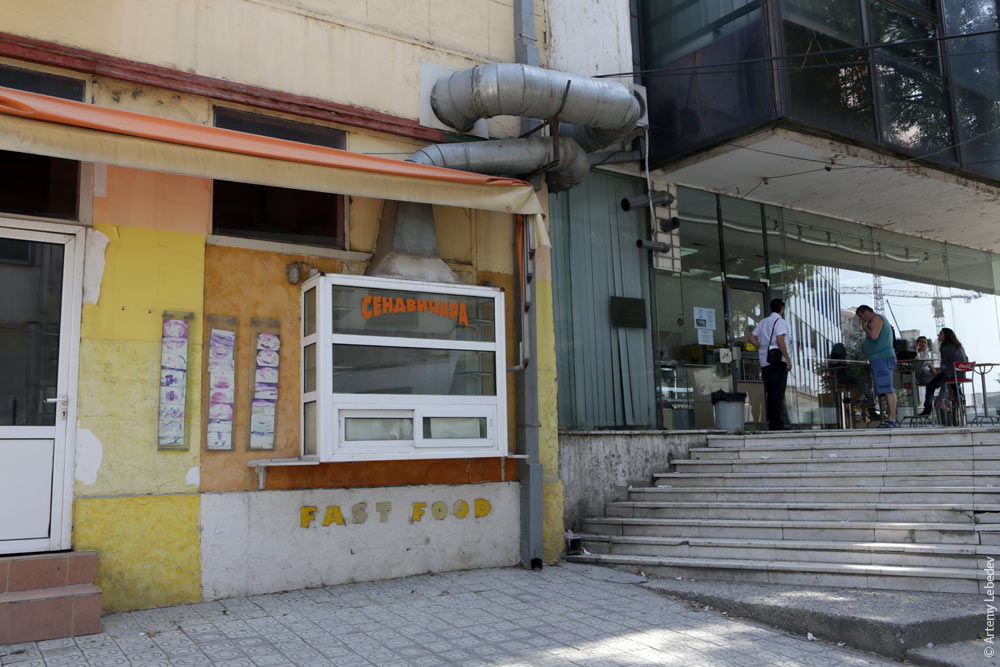 The classic Macedonian kiosk. 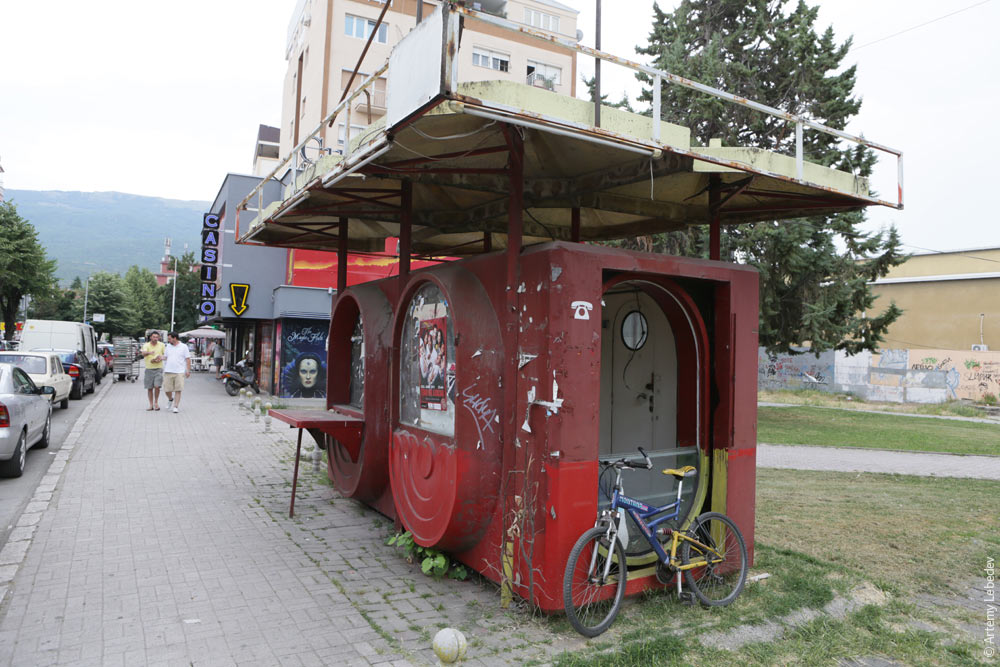 Macedonian shop signs are fairly interesting—they resemble Western ones, only everything is in Cyrillic. 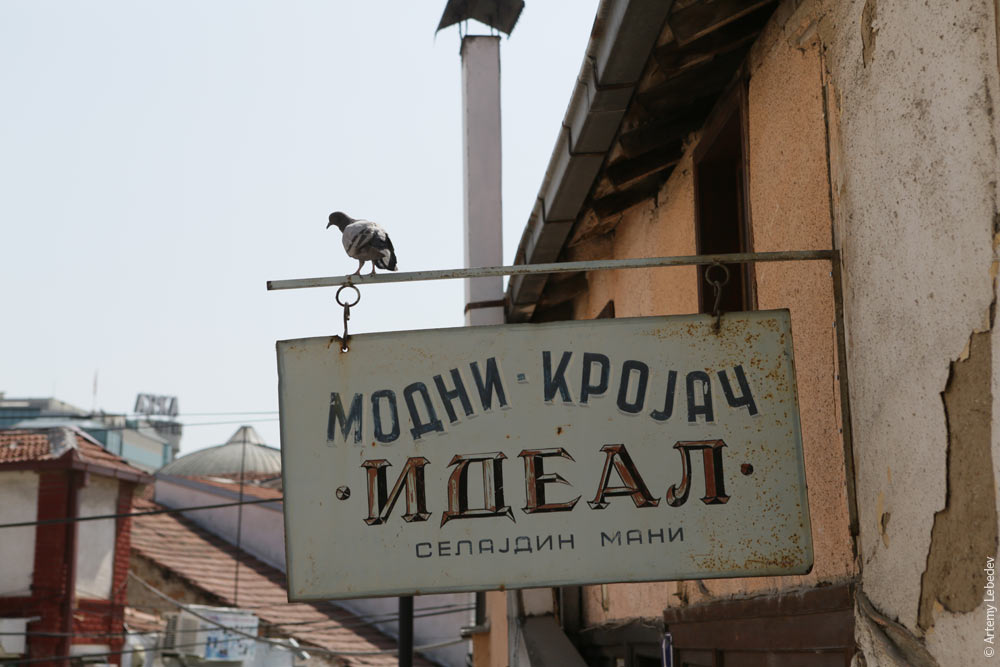 Although in many places the style is, of course, unmistakably socialist. 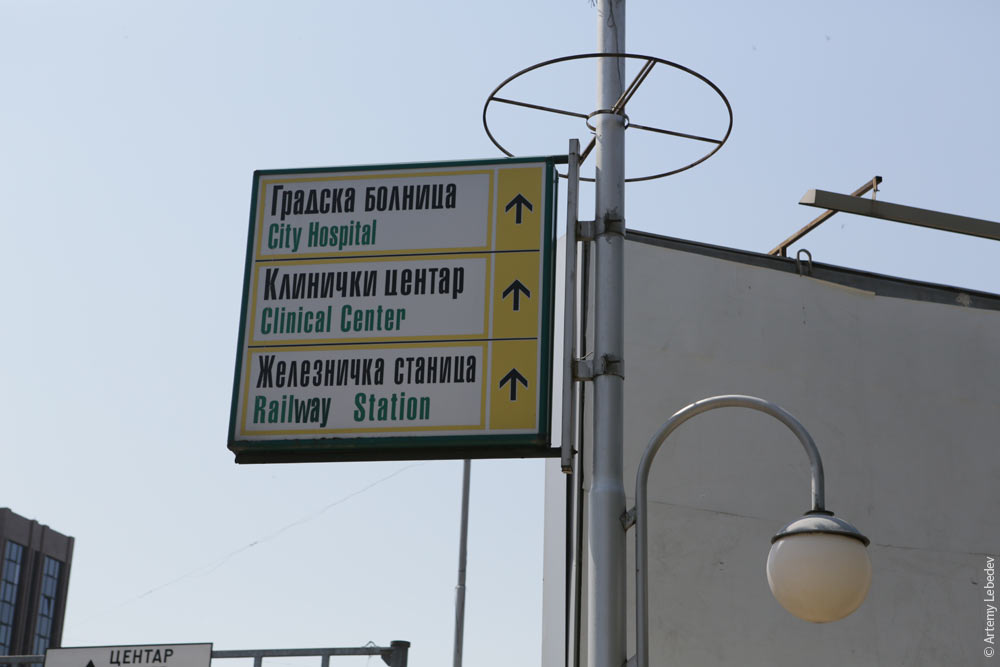 Macedonia is almost like Belarus. It’s still stuck in the 70s, albeit with a few sprouts of modernity here and there. 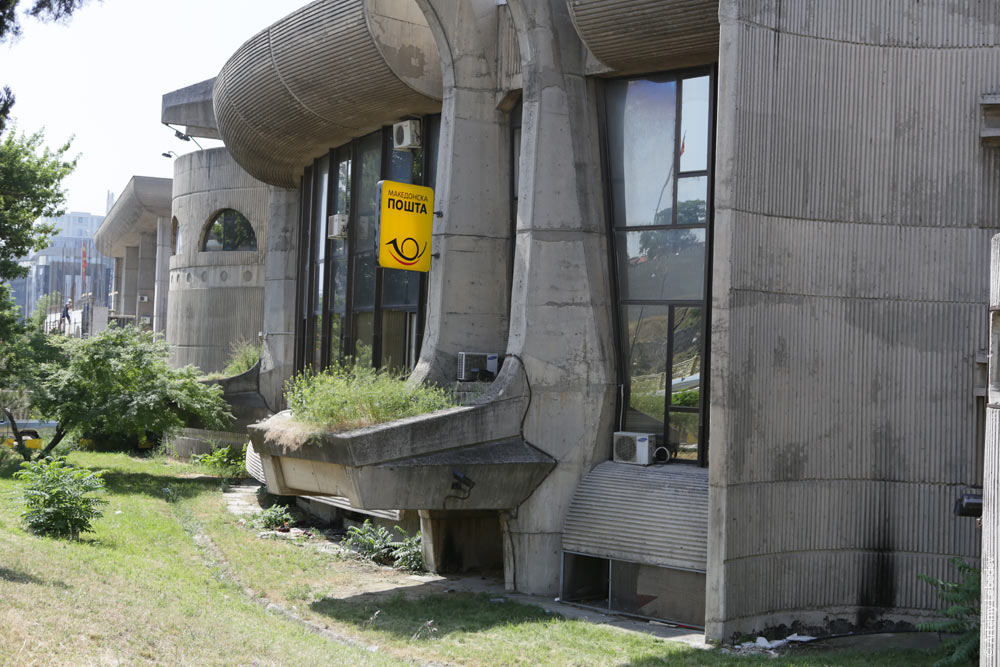 SkopjeMapThe very first thing the hotel receptionist told me was that a miracle had taken place in a local church two months prior: the icons had cleansed themselves overnight. Many of the parishioners had seen the soot magically recede from the walls with their own eyes. I rarely visit churches, but naturally I couldn’t pass such an occurrence by. I affirm: the icons had been cleansed. Precisely up to the edges of their frames. And up to the height which the miracle was able to reach on a stepladder. 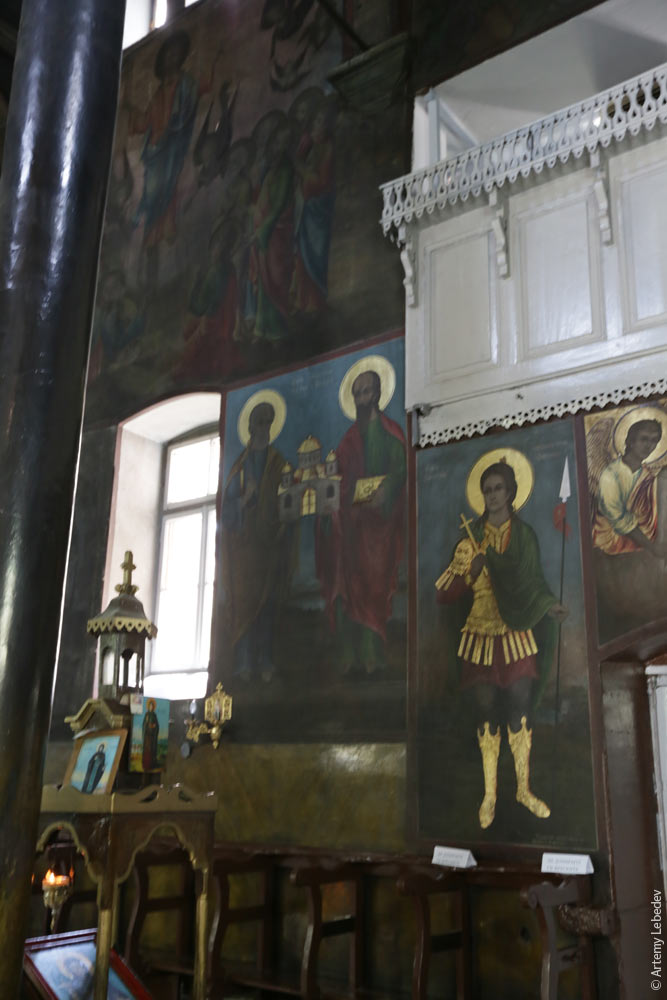 To give the reader an idea of what the capital of Macedonia looks like: 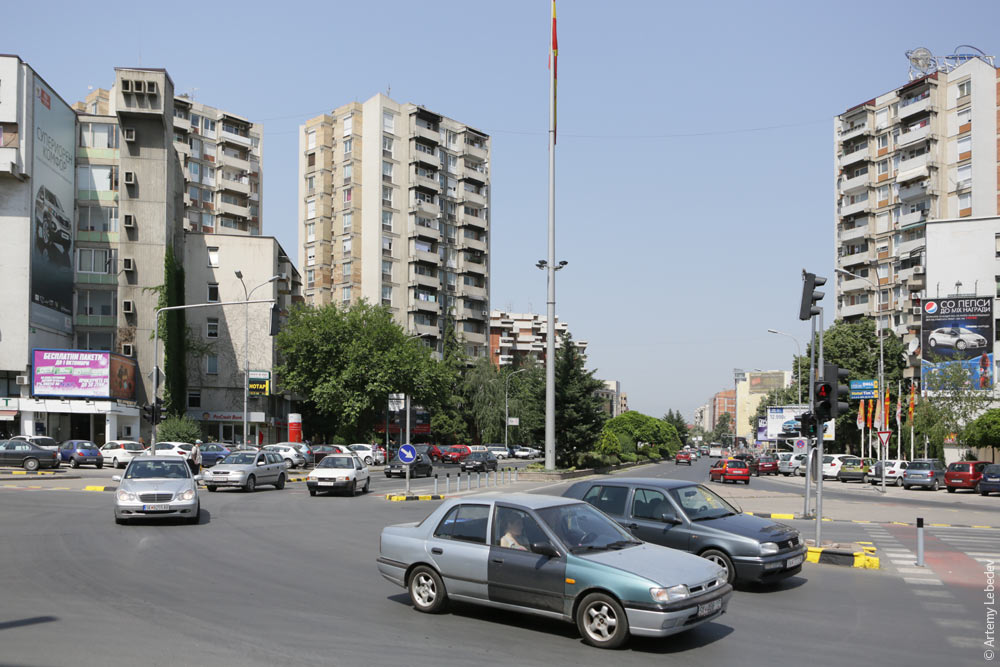 The city is being hastily filled up with monuments. They appear to all share the same author. All are giant, squat and unattractive, with massive hulky legs, exaggerated features and boring, static, tacky compositions. 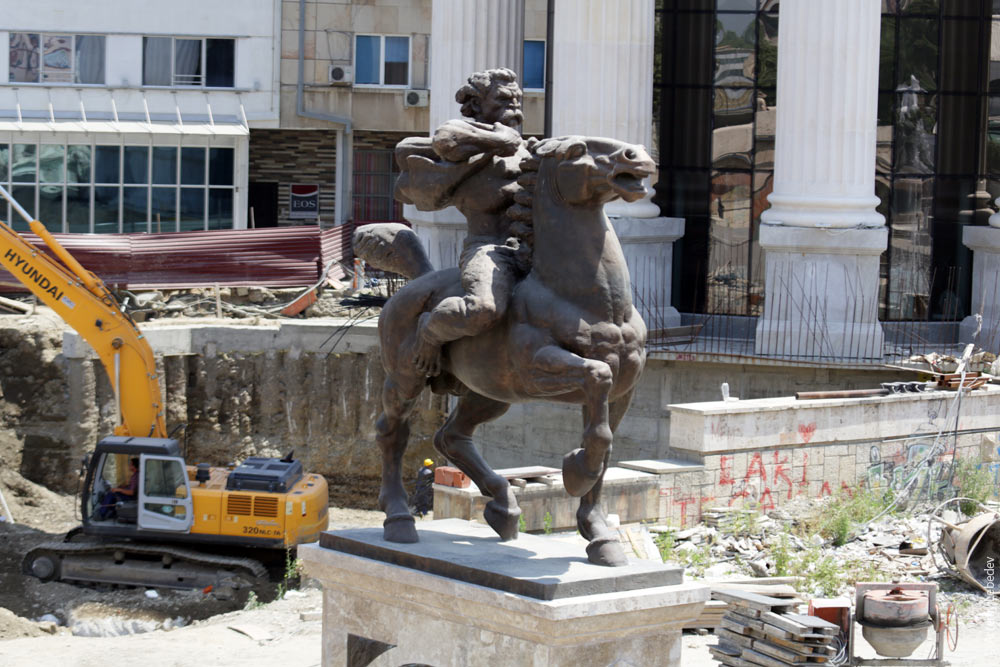 As if that weren’t enough, there are more than enough of these sculptures to go around. 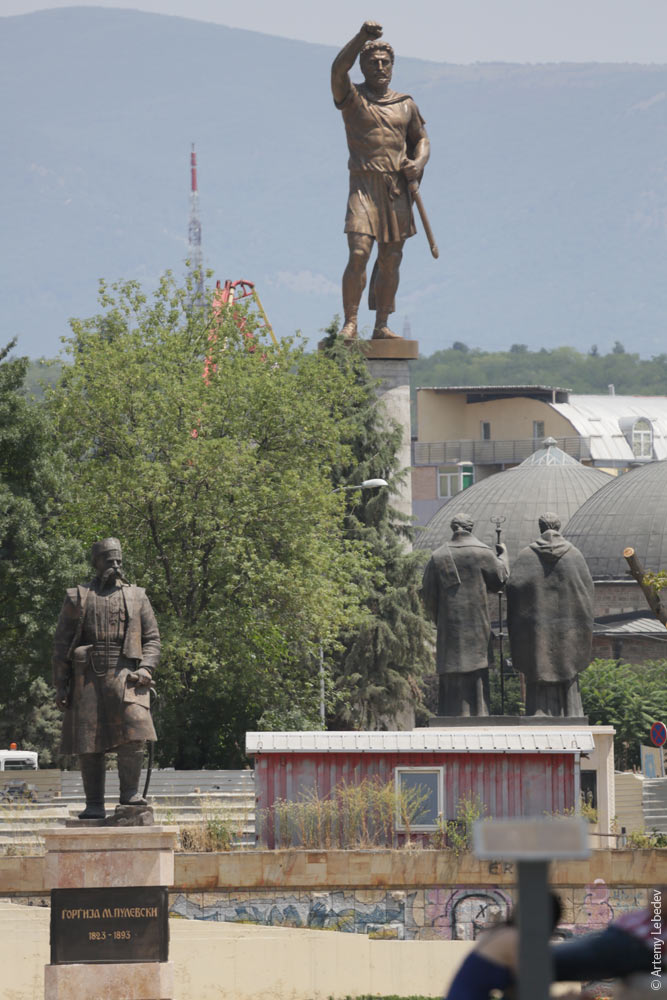 More than enough is not an exaggeration. A group of sculptures depicting a meeting of the people’s deputies—ten at the table, one speaking from the tribune—is inevitably plopped down right in front of another group featuring a goddess on a pillar, four horses, and a hero. 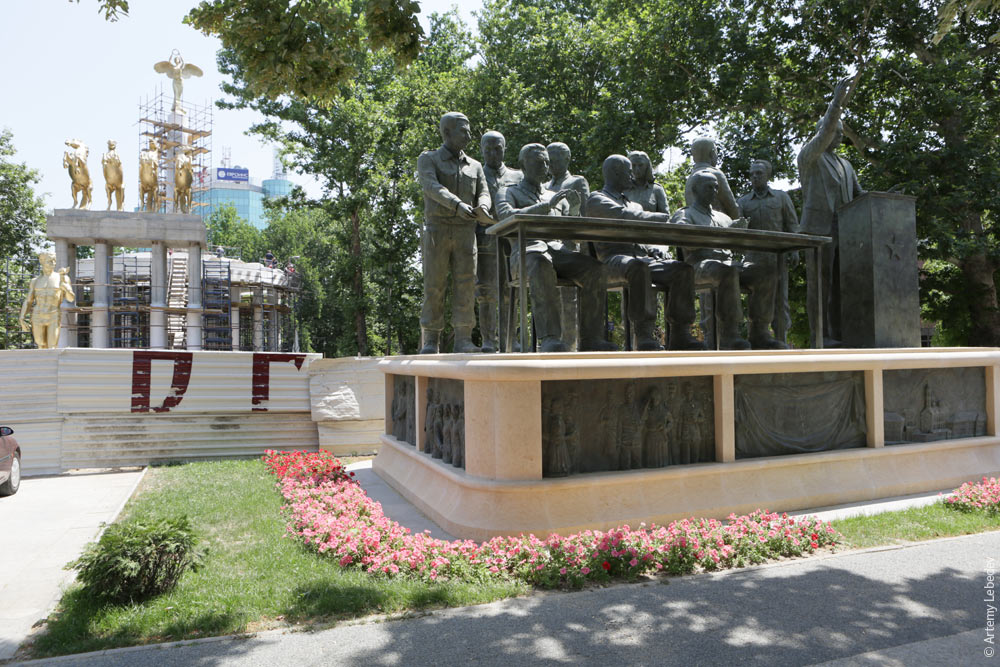 The manhole covers, on the contrary, are elegant and beautiful. 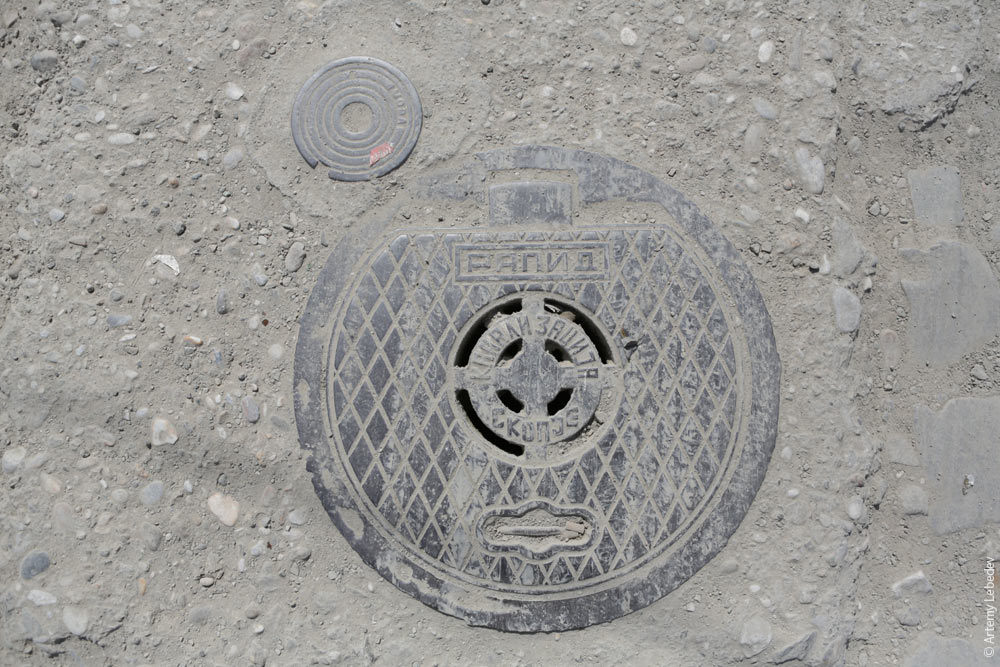 The street signs are like the ones in Istanbul—pressed tin plates.  A parking sign. 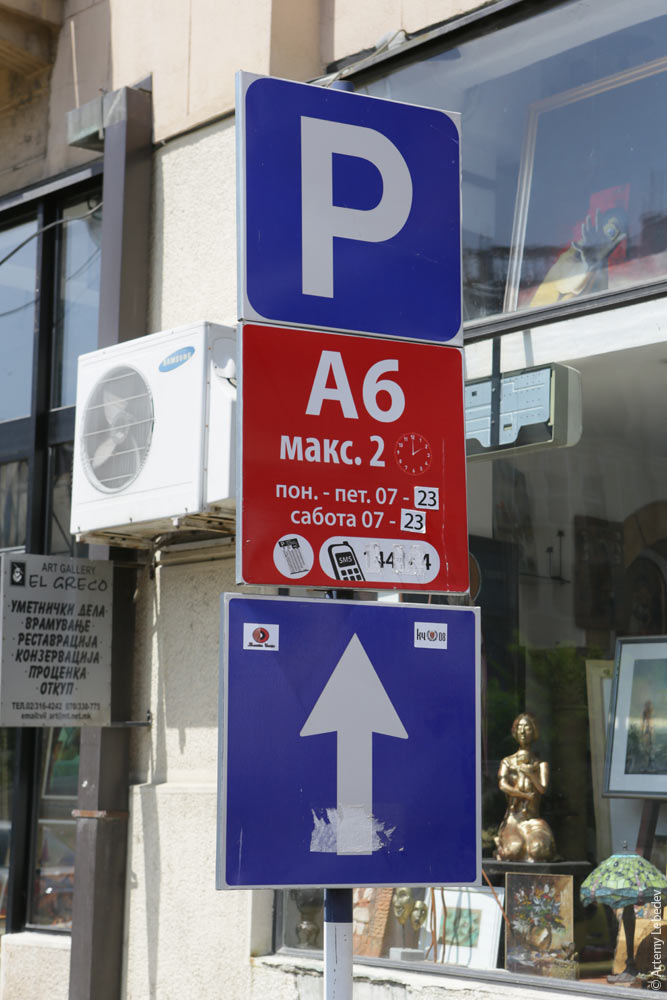 How to pay for your parking using your cell phone. 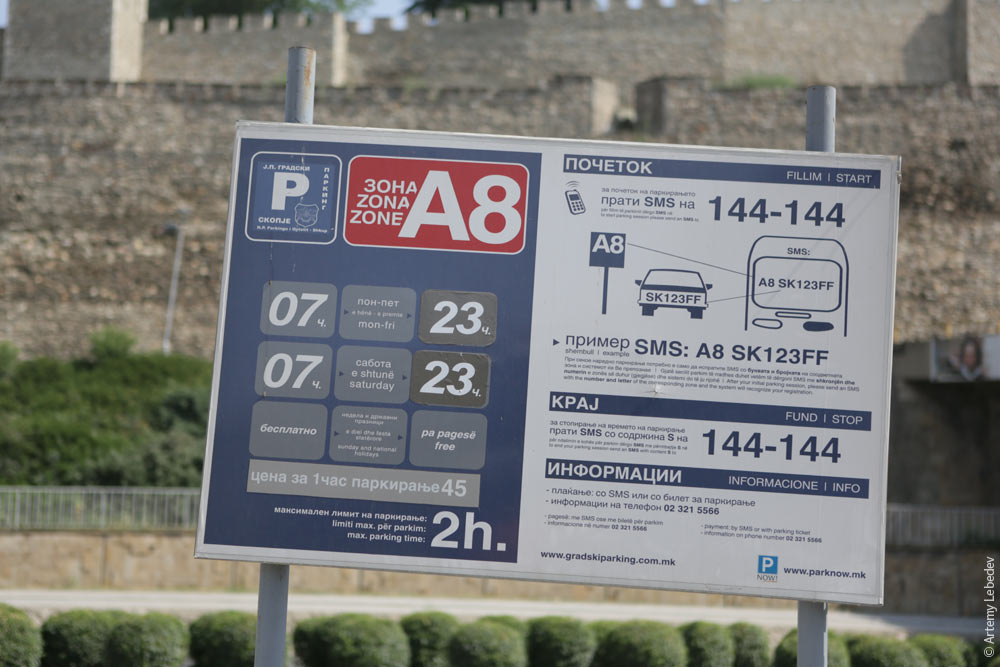 A lane control sign. 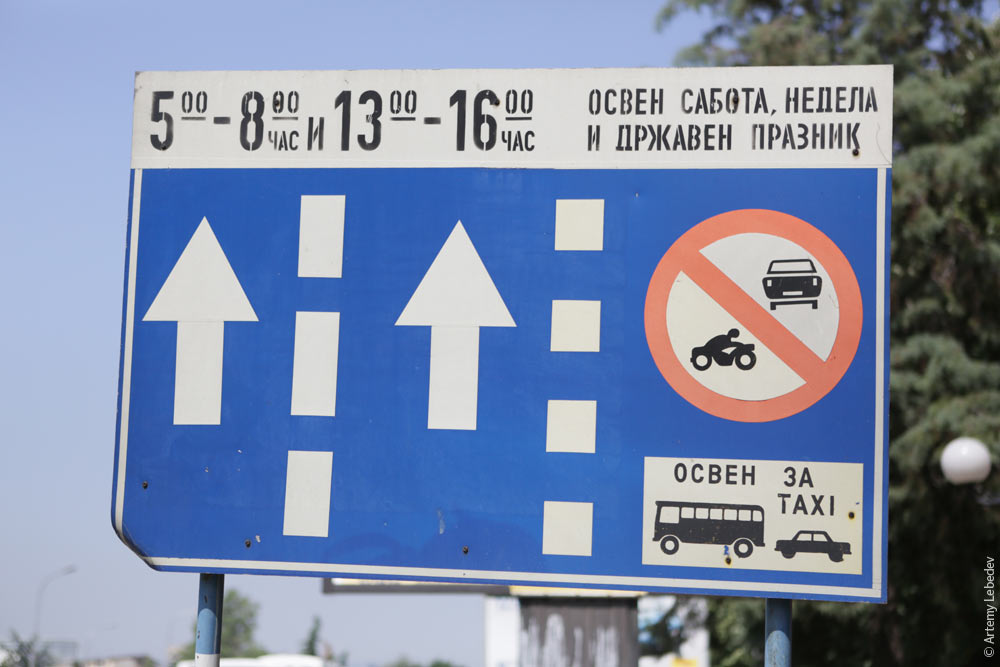 A payphone. 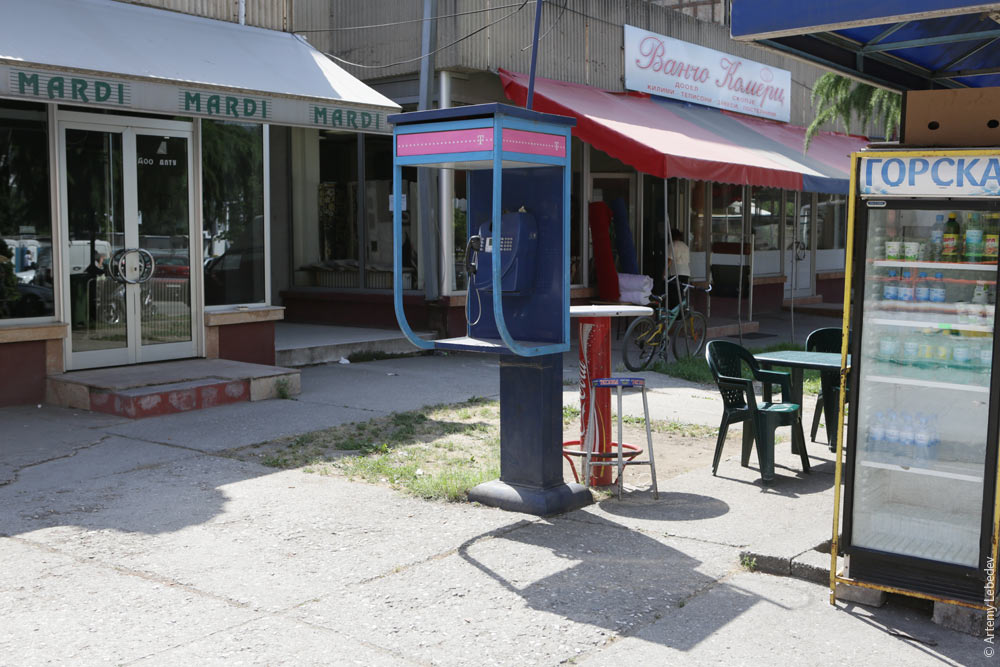 A bus stop. 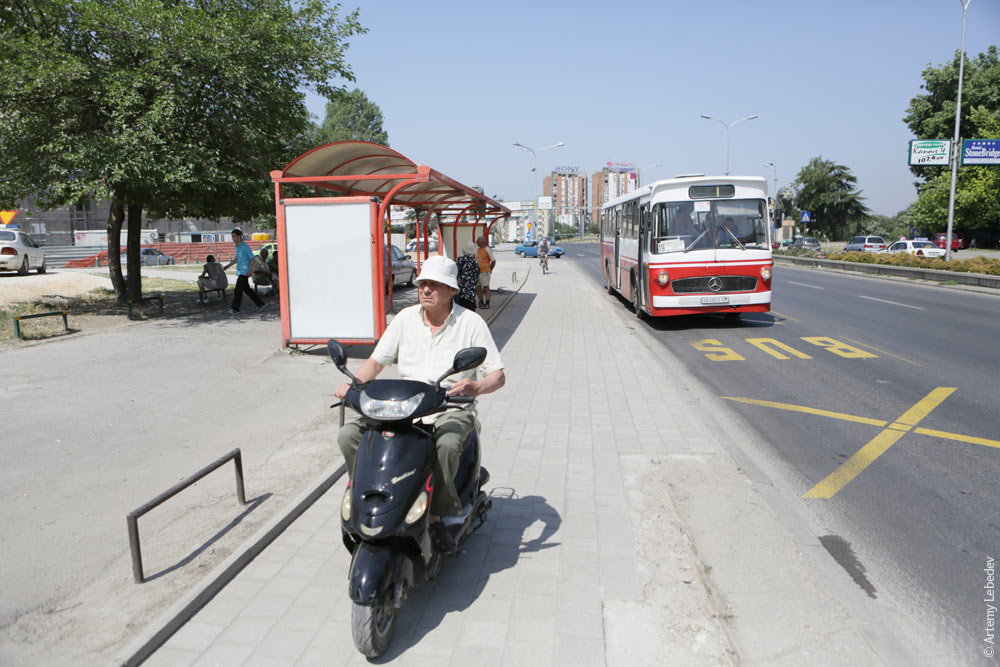 Half the buses are double deckers (although not from England—they’re made in China). A bit unexpected.  Trash dumpsters. 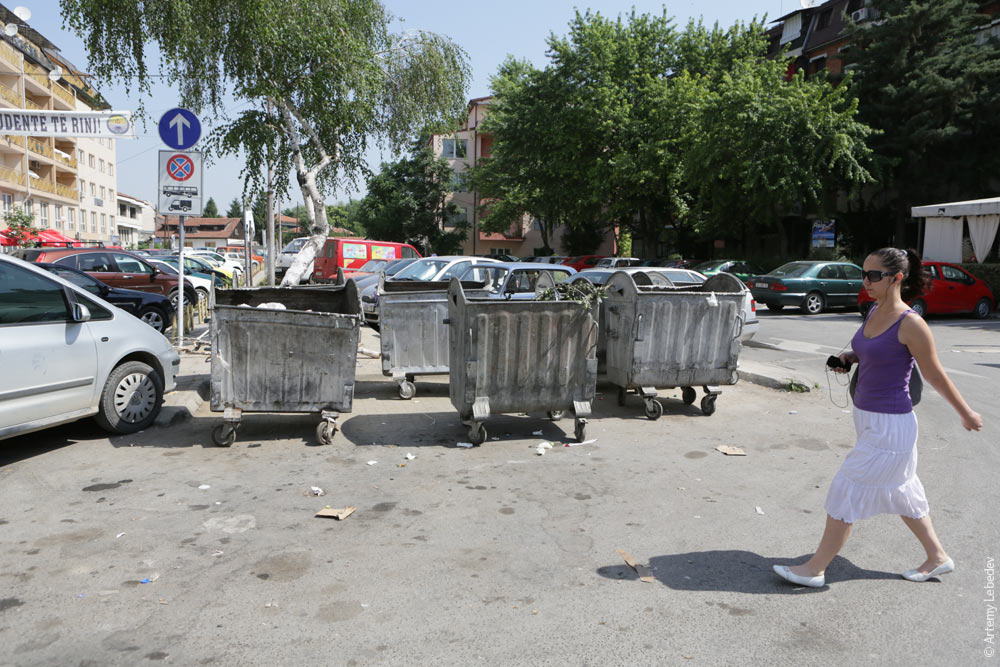 The trash cans in the capital. 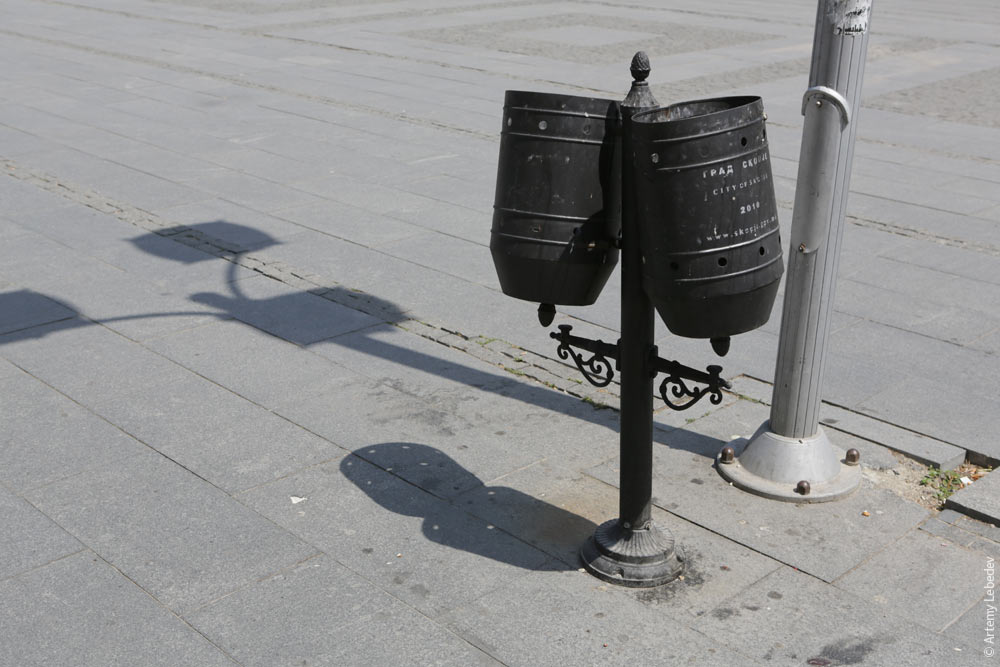 A building junction box (see Serbia or Montenegro). 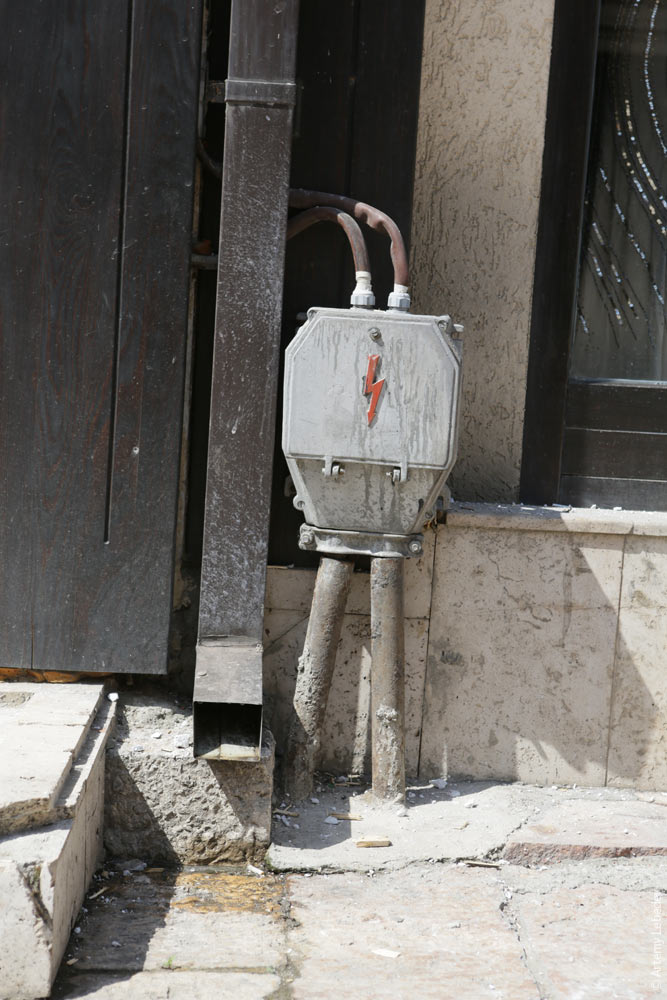 Prohibitive signs. The red has faded over time. 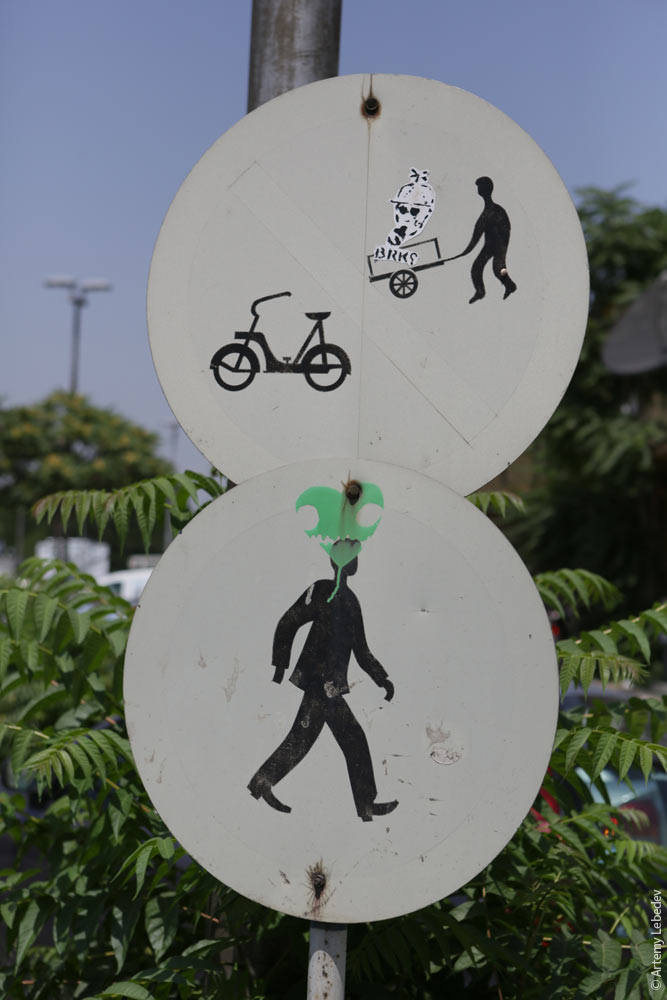 Writing on the walls. 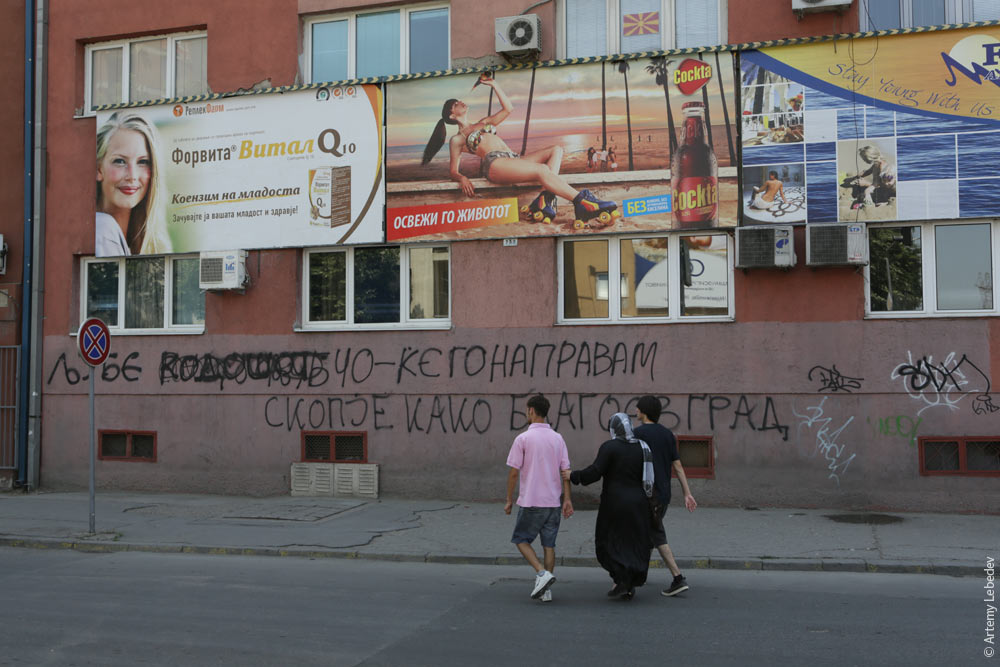 Mailboxes outside a post office. They are currently the reigning champion of the world’s ugliest mailbox competition. 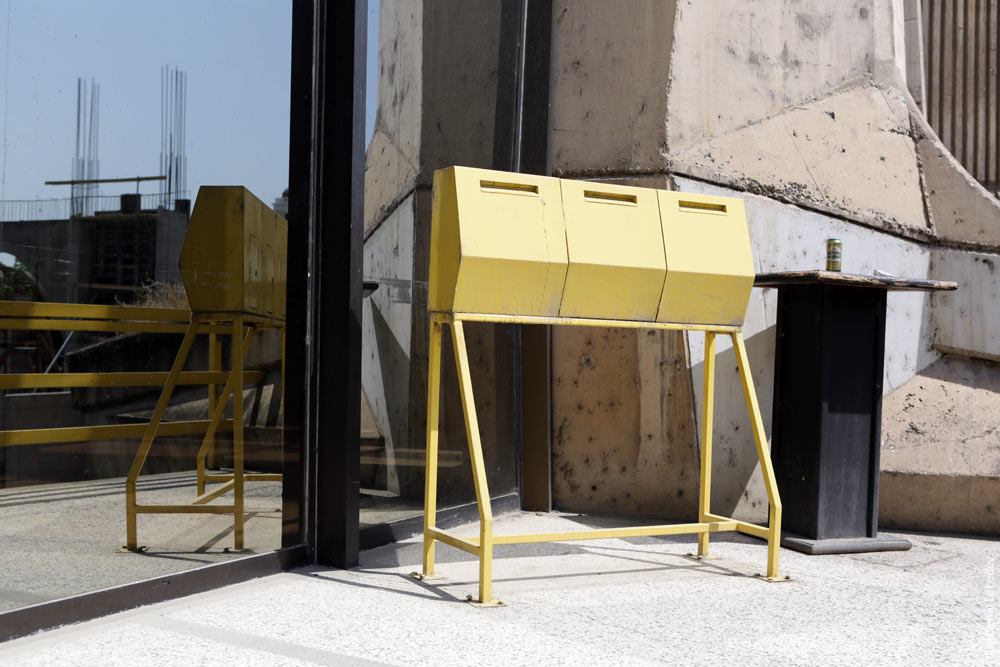 A post box next to some café in the city is being used by the waiters as a place to keep their ashtray, cigarettes, and unfinished coffee. 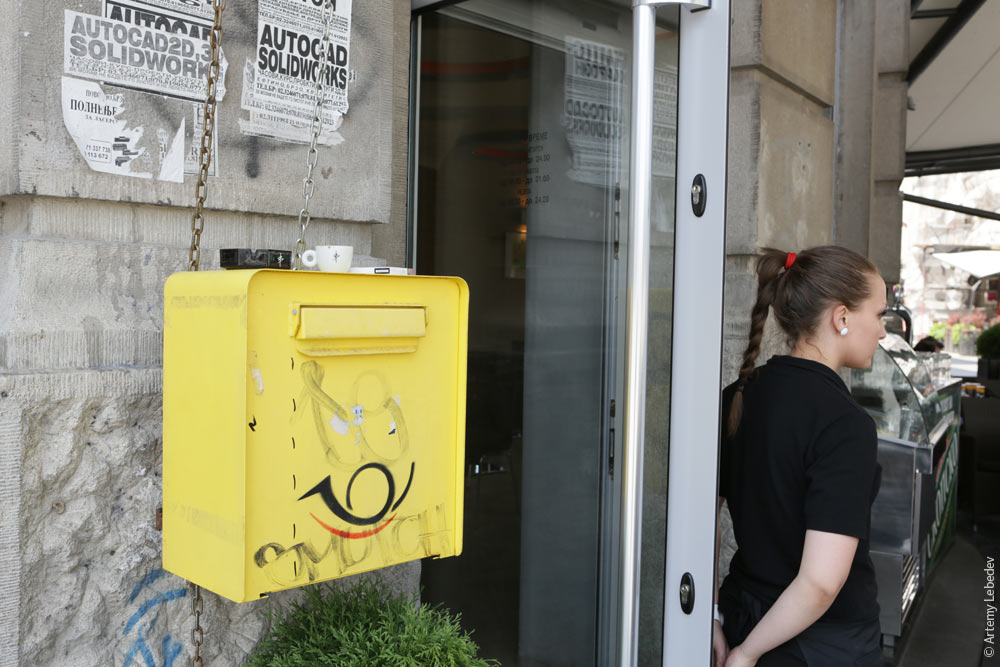 OhridMapThe city of Ohrid is located on a lake with the same name. People come here to swim, enjoy a scenic lunch, relax. 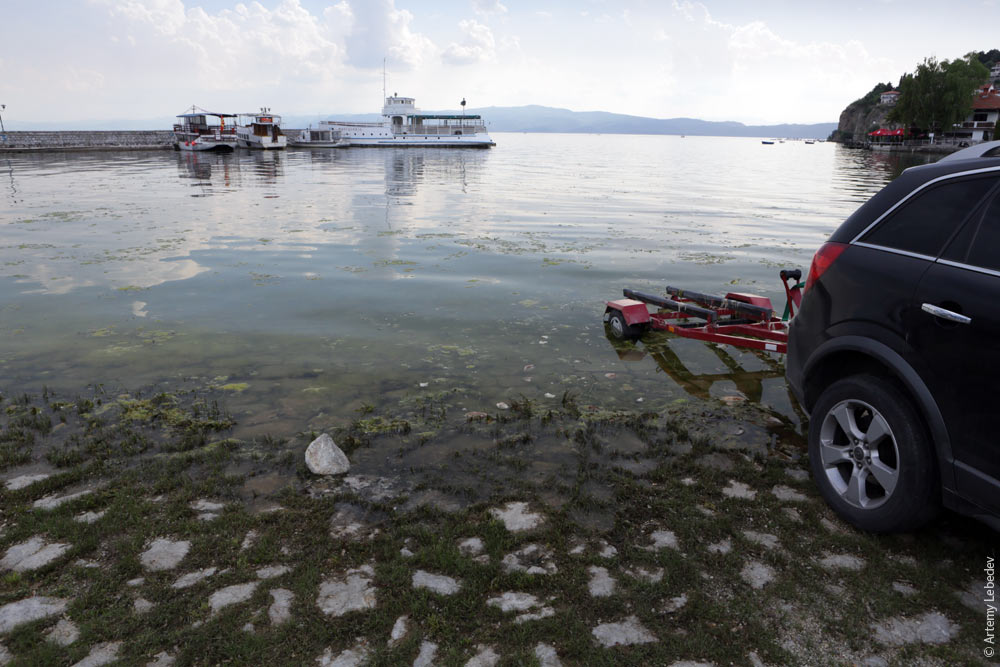 In addition to the regular metal dumpsters, there are also yellow plastic ones—for, oddly enough, plastic recycling. 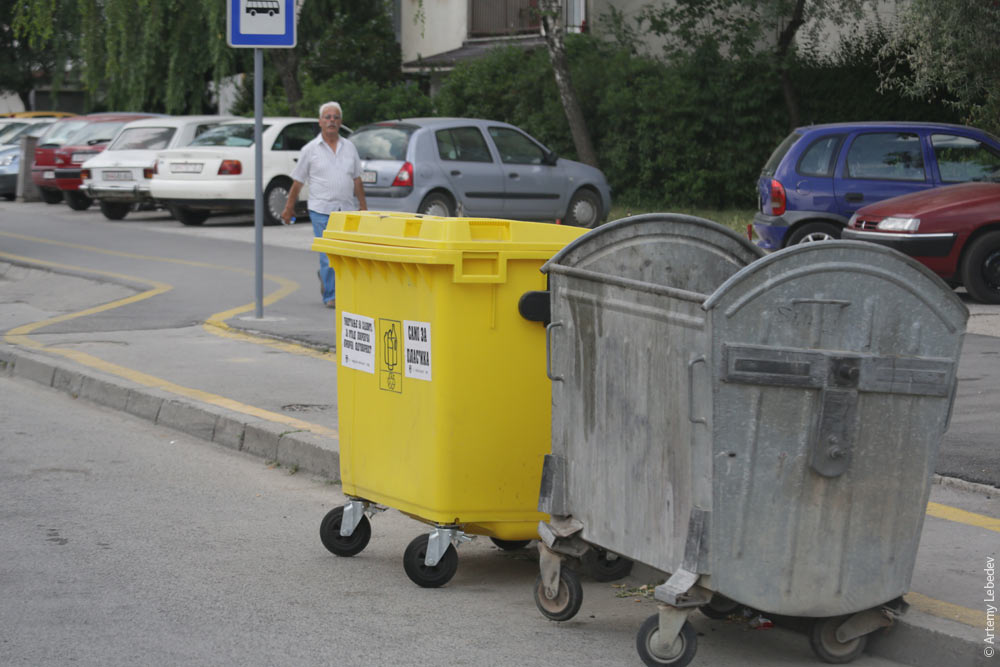 A trash receptacle consisting of a plastic bag on a stick with a hoop, like in Paris, Mayotte or Kiev. 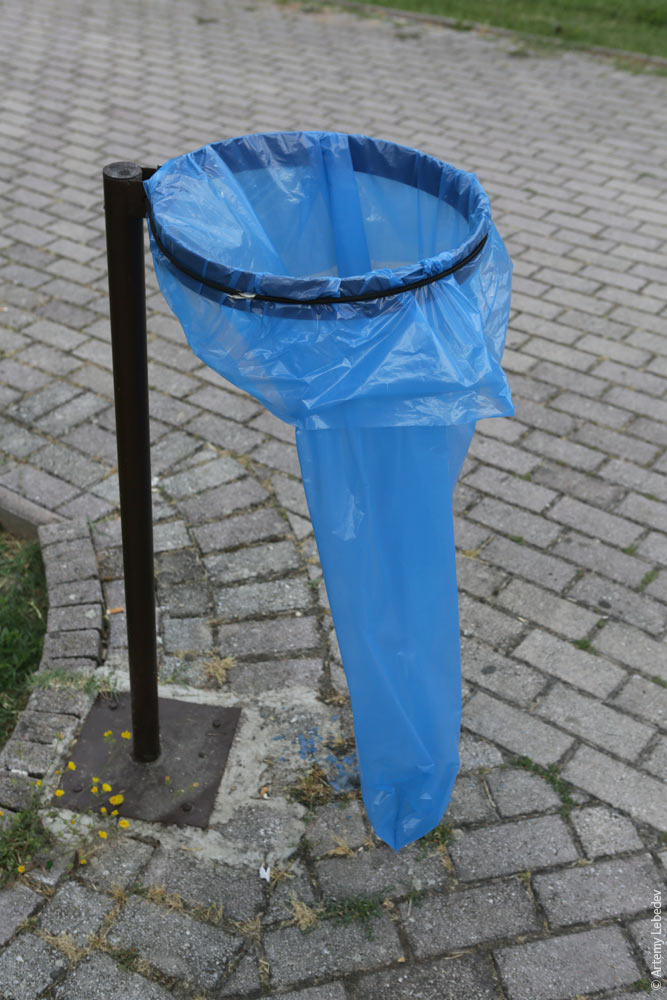 An ordinary trash can. 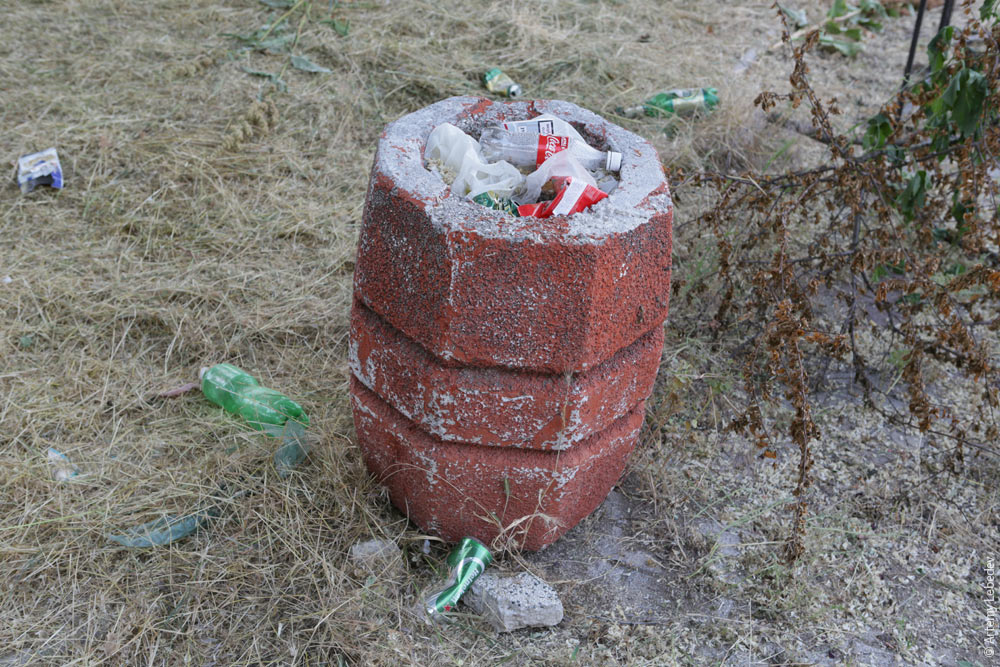 Obituaries. 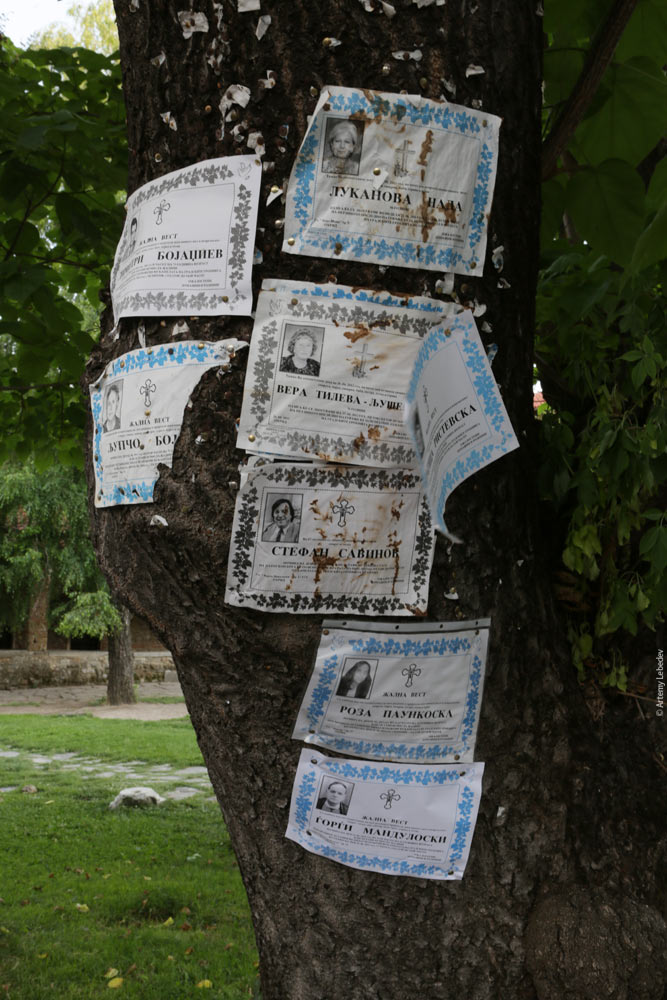 A fire hydrant. 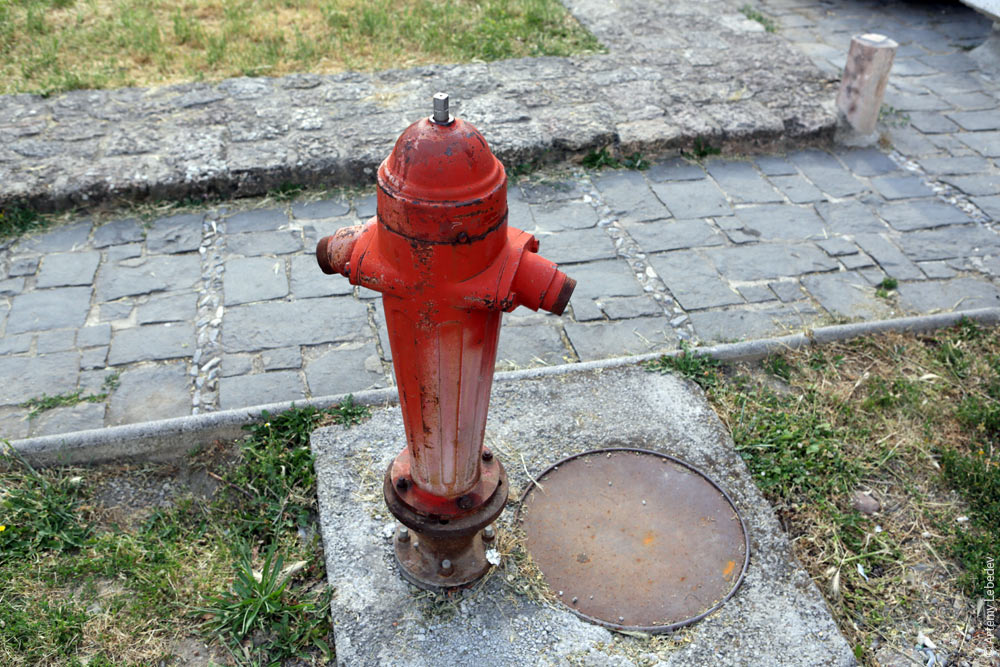 A parking meter which makes excellent use of the gray to group elements related to specific functions: paying with a card, paying with coins, help. 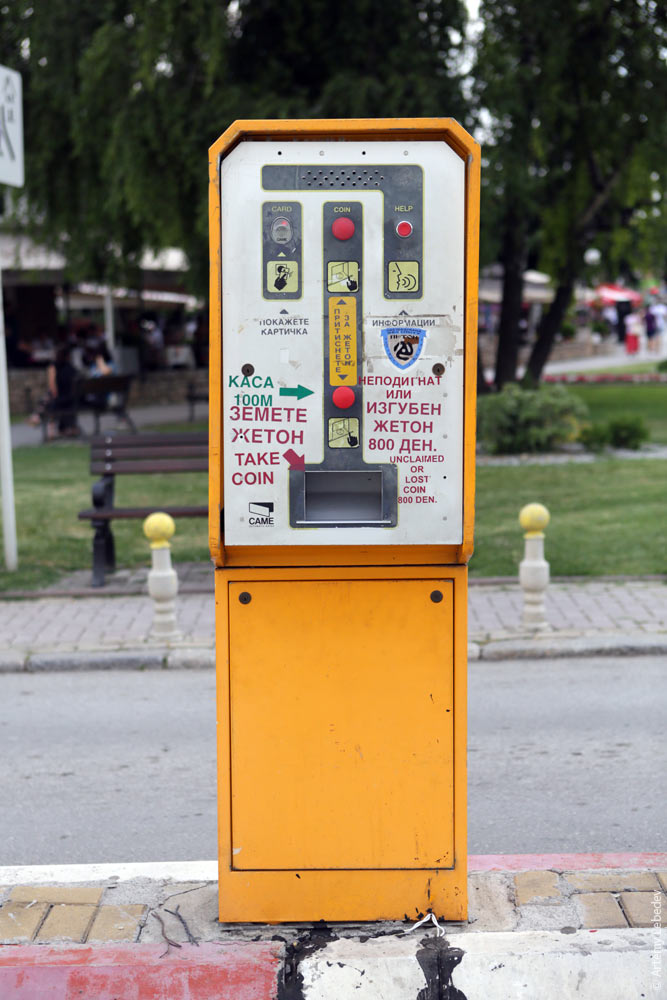 Automobiles. 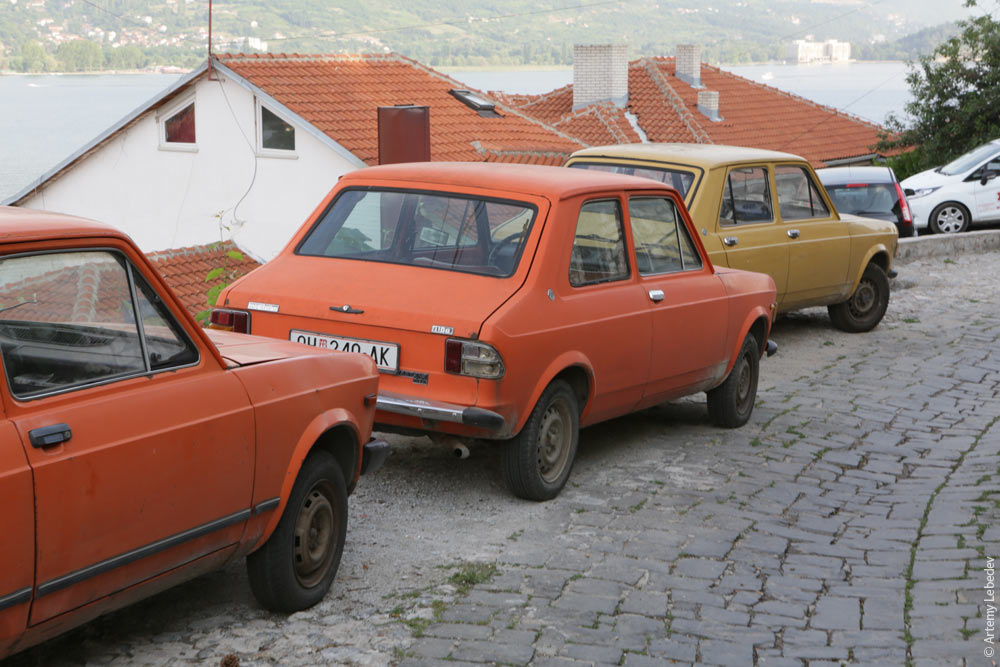 The custom of protecting the wheels of cars parked long-term with pieces of cardboard remains an unsolved mystery (the same thing was encountered in Kosovo). 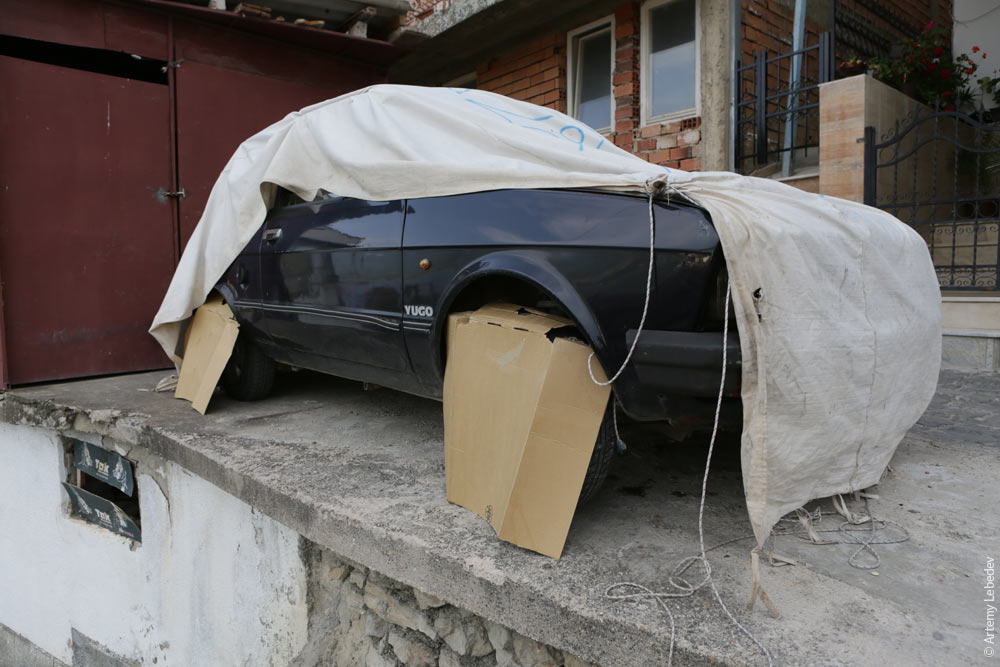 Macedonia—your holiday destination! 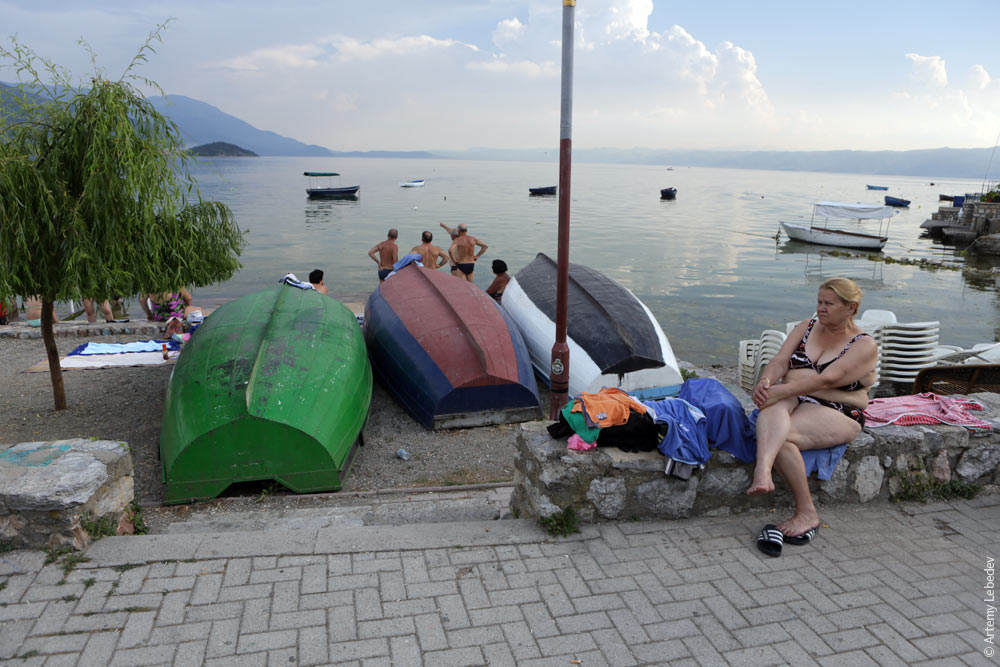 |